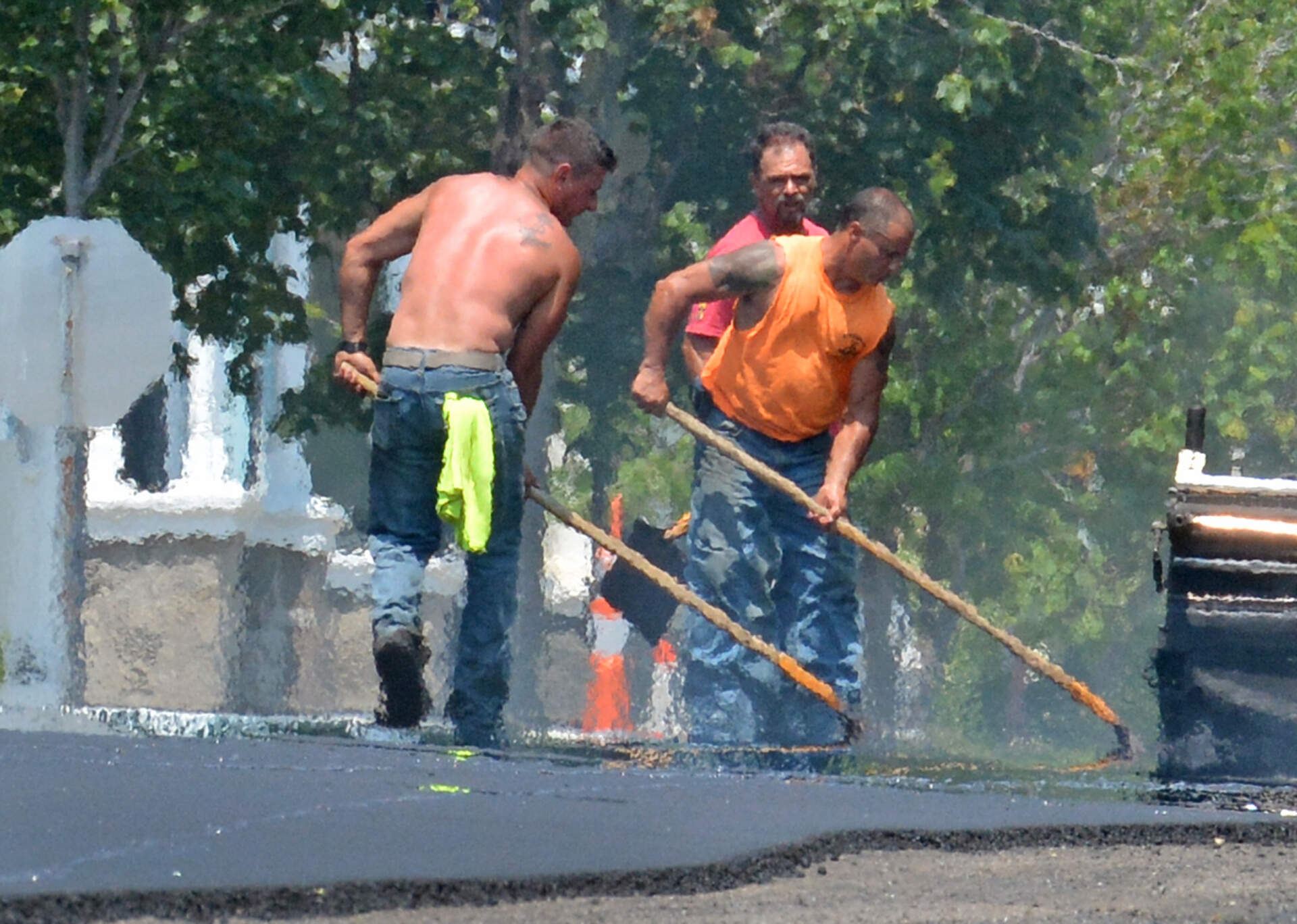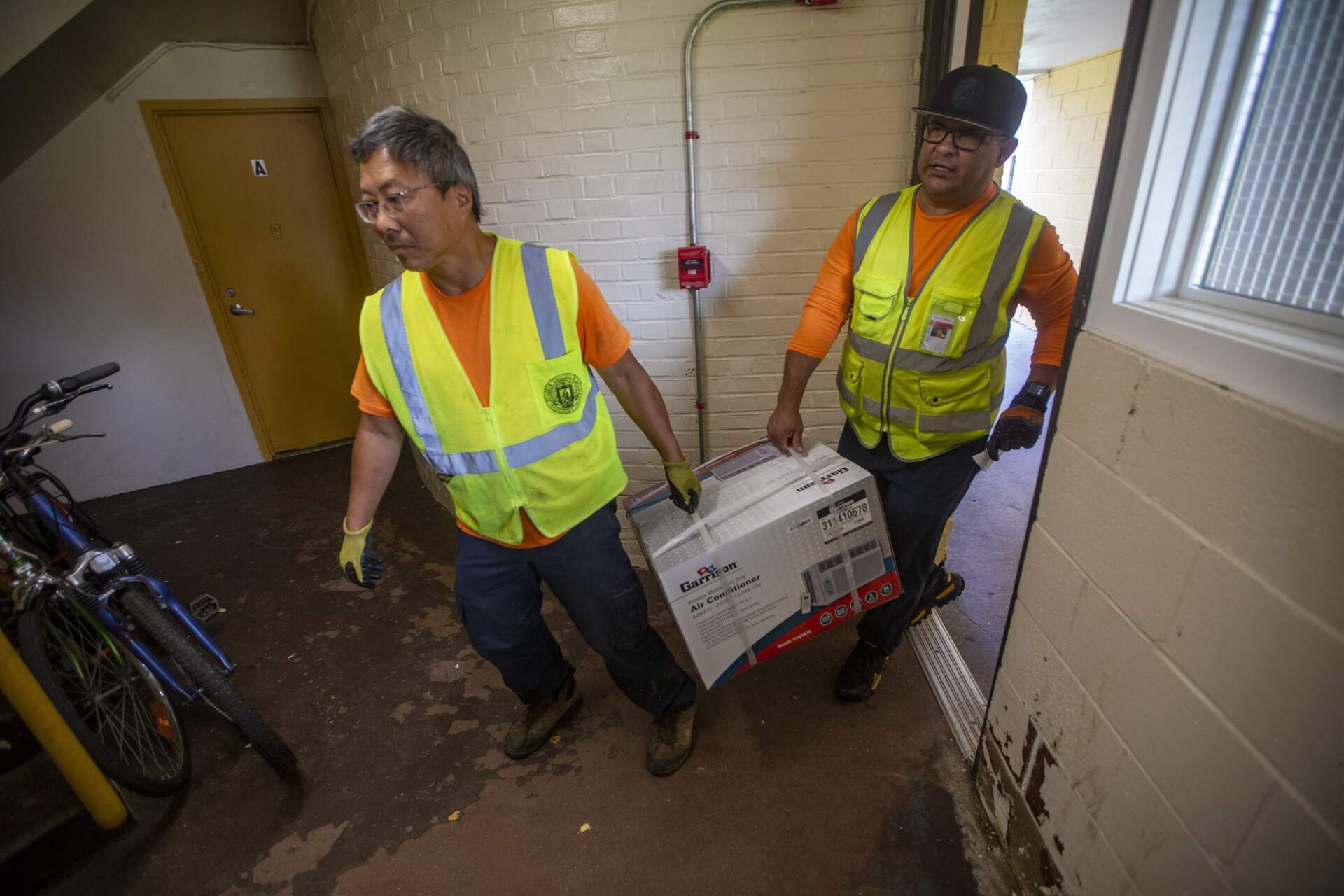Advertisement
Most New England states don’t track ‘heat-related’ deaths. Experts say that’s a problem
Resume
A few summers ago, on a hot and muggy evening, an unconscious 74-year-old woman with a history of heart disease and diabetes was brought to the emergency department where Dr. Hillary Irons was working. Irons, a physician with UMass Memorial Health, recalled the woman had a temperature of 102 degrees and a pounding heart.
Her son had found her lying in her bed, unresponsive, after he got home from work. He told Irons that their apartment had a window air conditioning unit, but it was broken.
At the time, the Northeast was in the midst of a heat wave and Irons had already treated several patients that day with varying degrees of dehydration and heat exhaustion. She and her team immediately went about trying to cool the older woman’s body and give her fluids.
“When people have chronic medical conditions, they're in a very delicate balance between everything being OK and things being thrown off,” Irons said.
Many things can throw off that balance, including exposure to heat. When the temperature rises, the human body begins to work overtime to cool itself, increasing the risk of things like heart attacks and organ failure.
The woman didn’t respond to the treatments, and soon her kidneys started to fail. At her family’s request, the hospital staff initiated comfort measures. A few hours later, her heart stopped.
The official cause of death was kidney failure. But did she also die because of the heat?
“It’s hard to say for sure,” Irons said. “But had it not been such a hot and humid day, she might have survived.”
The U.S. Environmental Protection Agency calls heat “the leading weather-related killer in the United States.” On average, it kills about 600 Americans every summer — a number that's expected to rise as climate change fuels more extreme heat waves.
Yet, even as heat becomes a bigger problem that garners more public attention, experts say that many cities and states across the country greatly underestimate the number of people who die annually from extreme heat.
In large part, that’s because many deaths where heat plays a role aren’t counted as “heat deaths” on death certificates. And without accurate and consistent information about people who are dying, it’s challenging to know whether community and government efforts to address heat resiliency are working.
“Communities around the country are trying a number of new, innovative approaches to try to reduce the amount of suffering from extreme heat,” said Greg Wellenius, a professor of environmental health at Boston University’s School of Public Health. “And it's very hard right now to measure which of those really good ideas are working and which are not as effective.”
Having good data about heat-related mortality is also important for equity. Heat poses a risk to everyone, but not everyone faces the same risk. Older adults, young children, people with chronic medical conditions, outdoor workers and the unhoused are the most likely to die from heat exposure.
“Heat waves are slow and silent and invisible killers of silenced and largely invisible people,” said Eric Klinenberg, a sociologist at New York University who studies how cities respond to climate change. “Being able to establish a link between rising temperatures and health problems and deaths is crucial.”

'Heat-caused' vs. 'heat-related' deaths
Some deaths are obviously attributable to heat: An athlete who collapses while exercising, or a construction worker who experiences heat stroke. In these examples, the person filling out a death certificate would probably list the cause of death as “exposure to excessive natural heat — hyperthermia.”
But in many more cases — like the woman Irons saw in the emergency room — that attribution is complicated.
“There’s no diagnostic criteria [or] test of ‘was this death clearly heat-related or not,’ ” Wellenius said. “So it becomes about inferring that from the available evidence, which is hard.”
Two doctors could look at the same deceased patient and come to different conclusions about the role that heat played; some might choose not to list it as a secondary cause on a death certificate.
There aren’t even agreed-upon definitions for terms like “heat-caused” and “heat-related” death. As a result, states and counties produce a patchwork of data across the country. (For consistency, this story uses the term “heat-caused” death to refer to cases where heat was the primary factor, and “heat-related” death when heat is a secondary or contributing cause.)
“We all agree that heat kills lots of people every year,” Wellenius said. “And it would be really helpful if we could better track who is dying on these days of extreme heat that we keep seeing.”
Other public health officials agree.
“The reality is we don’t have an accurate, data-driven system,” said Francesca Dominici, a professor of biostatistics at the Harvard T.H. Chan School of Public Health. But if public health and government officials had a better picture of who was dying from heat — and where they were dying — it would allow for more targeted interventions, like giving air conditioning units to residents who need them, she said.

Even the U.S. Centers for Disease Control and Prevention, the country’s top public health agency, lack standardized criteria for determining heat-related deaths. It relies on data from states.
“We encourage those who report the cause of death to report all those diseases, conditions and/or circumstances that caused or contributed to death, [including] excessive heat,” a spokesperson for the CDC wrote in an emailed statement. But “ultimately, we have to rely on the expertise of the medical examiner or coroner in determining the cause of death and whether heat was a factor or not.”
Tracking heat in New England
In New England, all six states regularly collect data about heat-caused mortality — though they don’t always report it until two or three years later. Typically, only a handful of people die directly from heat every summer. According to state-level data gathered by WBUR, heat caused about 60 deaths across the region between 2012 and 2022.
Several states were also able to provide data on how many people had heat as a secondary cause of death on their death certificate. But most states don't actively track these numbers.
Experts like Dominici said it’s hard to know if the heat-related death data New England states provided is accurate. It’s difficult to know whether medical examiners and doctors across the state decide to include heat as a contributing cause of death in a standardized way.
“It’s similar to what we were facing during the COVID pandemic,” when states, counties and cities reported data about coronavirus cases and deaths in inconsistent ways, Dominici said.
That’s not to say New England states are ignoring the impact of heat. They all track heat-related emergency room visits and hospitalizations.
In a statement, a spokesperson for the Massachusetts Department of Public Health said that tracking hospital visits was a more meaningful metric than mortality because “it captures a more comprehensive set of events and is a more robust measure not limited to events that result in death.”
Other public health experts disagree. It’s not an “either-or” thing, they say.
“The population that's at highest risk of dying is probably different than the population that's at highest risk of going to the emergency room or hospital,” Wellenius said.
That's why experts say a comprehensive public health response would focus on measuring and preventing both hospitalizations and deaths.
Measuring heat deaths
Tracking heat-related deaths may be tricky, but it’s not impossible.
“States like Massachusetts don't track heat deaths because they don't have to and because no one has really fought for them to do it,” said Klinenberg of NYU. “And the reason is that historically we've largely failed to recognize how dangerous the heat can be.”
But that appears to be changing as the fingerprints of climate change become increasingly hard to ignore, he added.

Public health experts say there are two main methods for measuring heat-related deaths. In Maricopa County in Arizona, officials count the number of death certificates where heat is listed as a contributing factor. The county also collects more granular data about demographics, location of death and whether a person had a functioning air conditioner, which helps inform preventative efforts, said Dr. Nick Stabb of the county's health department.
Alternatively, in New York City, public health officials use statistical models to estimate the number of “excess deaths” — essentially, the spike in mortality above what would be expected given the time of year, temperature and other related factors. In 2022, for example, the city reported 10 heat-caused deaths and 360 heat-related deaths. (New York calls these “heat-exacerbated deaths.”)
The benefit of the excess death model is that it doesn't rely on the subjective decisions of individual medical examiners or doctors, so it should provide more accurate mortality figures, said Wellenius.
Consider the “heat dome” that settled over the Pacific Northwest in 2021. While Washington and Oregon each officially reported about 100 heat deaths, an “excess mortality” analysis concluded more than 600 people died — a figure many public health experts said was probably a more accurate representation of the heat wave’s toll.
Reasonable people may disagree about the best way to calculate heat deaths, Wellenius said, but one thing is clear: as heat waves get more frequent and intense, finding a way to track deaths could help save lives.
This segment aired on August 31, 2023.
